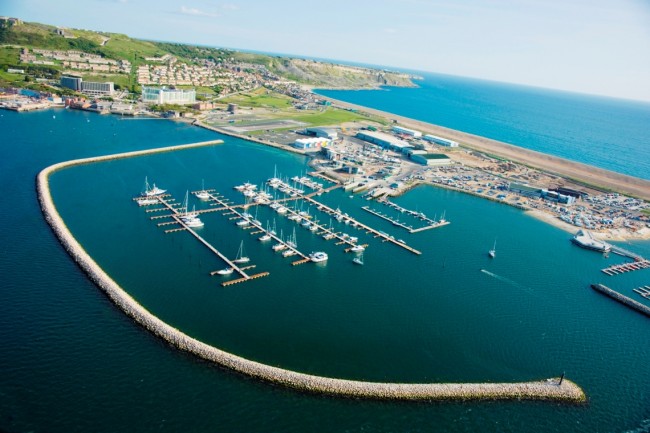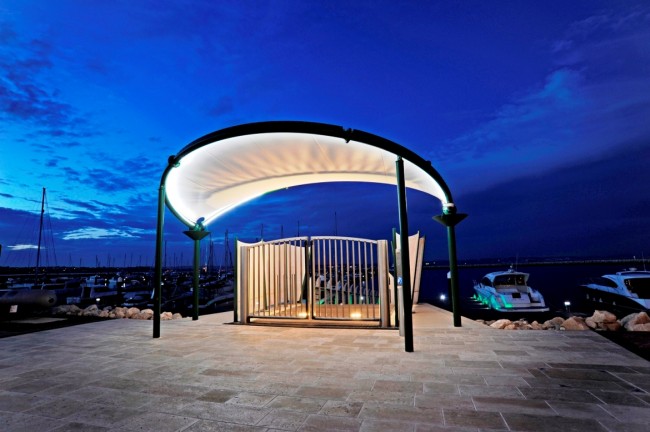 Innovative facility sets new standards in technical and design excellence Walcon Marine, the leading builder of marinas and yacht harbours, is proud of its role in ensuring that the facilities for the sailing element of the 2012 Olympics are among the first to be completed for that event. Portland Marina, commissioned by marina operator Dean and Reddyhoff, will be one of the key parts of the waterfront facilities when the competition gets underway in just over one year time. All the water‐based elements were built and installed by Walcon Marine, and this initial phase of the £27m project now offers 250 berths and full onshore facilities.
Innovative facility sets new standards in technical and design excellence Walcon Marine, the leading builder of marinas and yacht harbours, is proud of its role in ensuring that the facilities for the sailing element of the 2012 Olympics are among the first to be completed for that event. Portland Marina, commissioned by marina operator Dean and Reddyhoff, will be one of the key parts of the waterfront facilities when the competition gets underway in just over one year time. All the water‐based elements were built and installed by Walcon Marine, and this initial phase of the £27m project now offers 250 berths and full onshore facilities.
As befits an international sporting venue the marina has been built to an extremely high standard and includes a number of features not widely found elsewhere. Among these are the striking bridgehead canopy and gate with elegant design and detailed metalwork, and the innovative bridge that connects the marina to the shore. The latter is effectively fixed at each end to a section of decking that moves as a single piece as the walkway rises and falls in response to the tides. The decking sections attached to the head and foot of the bridge move freely on hidden runners giving a smooth transition from shore to marina, free of obstacles, steps, or other hazards.
Once afloat the main walkway is double width, with all the services running down a central duct allowing a good deal more space for gear and equipment than is usual on a marina of this size. All the pontoons are based on Walcon’s System 21 design that combines a mild steel structure with fibreconcrete protected polystyrene floats to create a strong and long‐lasting structure. Hot‐dip galvanisation gives protection against corrosion and hardwood decking was chosen for its durability and quality.
The finger pontoons installed here are the first of the new soft finger‐end type developed by Walcon in 2009. Built with rubber fender caps on each corner these ensure that any contact between boat and pontoon inflicts little or no damage due to the elimination of all sharp corners.
As a final touch, Dean and Reddyhoff specified that the outermost pontoons, intended to provide berthing for larger yachts, should have a freeboard of 650mm versus the conventional 500mm. This is to make it easier for owners and crew to embark and disembark from their boats in greater comfort by reducing the distance between side deck and pontoon.
Richard Reddyhoff, director of Dean & Reddyhoff, sums up the project: “Our vision was to create a marina worthy of such a world class sailing destination and I’m really proud of both what we’ve achieved and how we achieved it. We’ve shown that marina developments can meet the toughest environmental standards while making an important contribution to the local community. We’re now looking forward to playing a part in the 2012 Games, when Portland Marina will be well and truly thrust onto the world stage.”
For Walcon, managing director James Walters added, “We were delighted to have played a leading part in the development of a project that is going to have such a prominent role in the years to come. It was a pleasure to work for a client who placed such an emphasis on quality and the design and construction standards of Portland Marina have now set a new benchmark for the marina sector.”
Portland Marina is built on a former Royal Naval Air Site. The marina will form part of the venue for sailing events for the London 2012 Olympic & Paralympic Games and is positioned next door to the UK’s National Sailing Academy. Prior to the games it has also been designated as an approved training centre for overseas Olympic teams, and the UK’s Royal Yachting Association is using it as its training camp. All the piling for the project was undertaken by Walcon Marine using its floating piling rig, the Walcon Wizard.